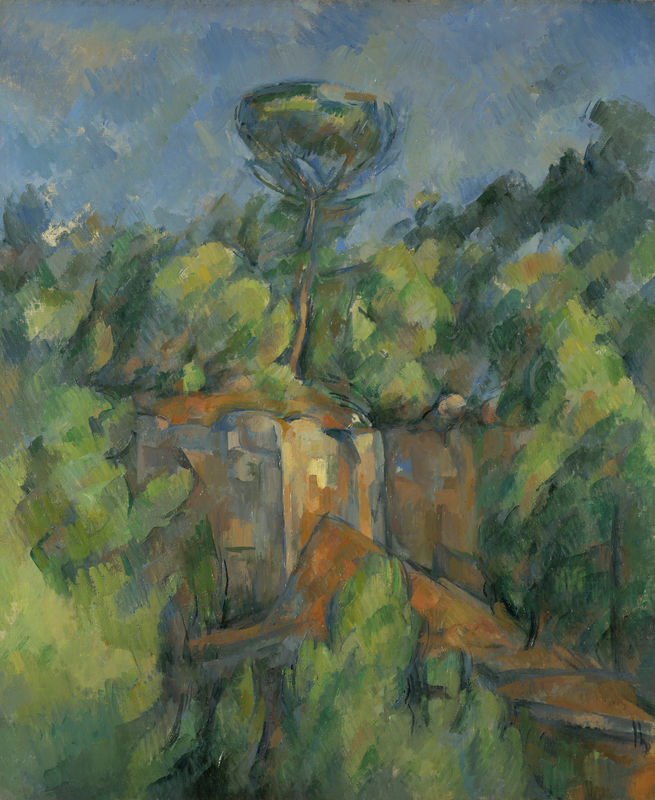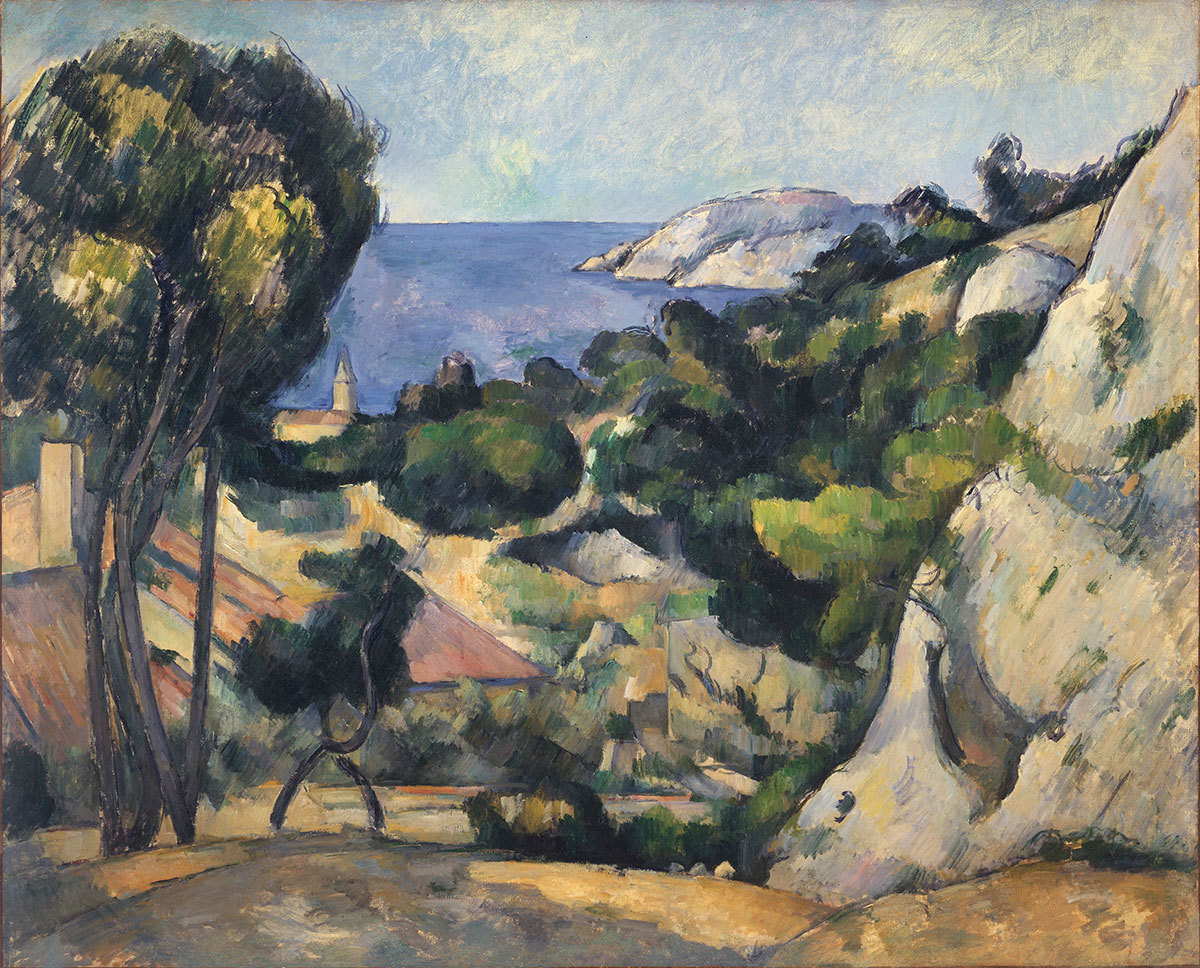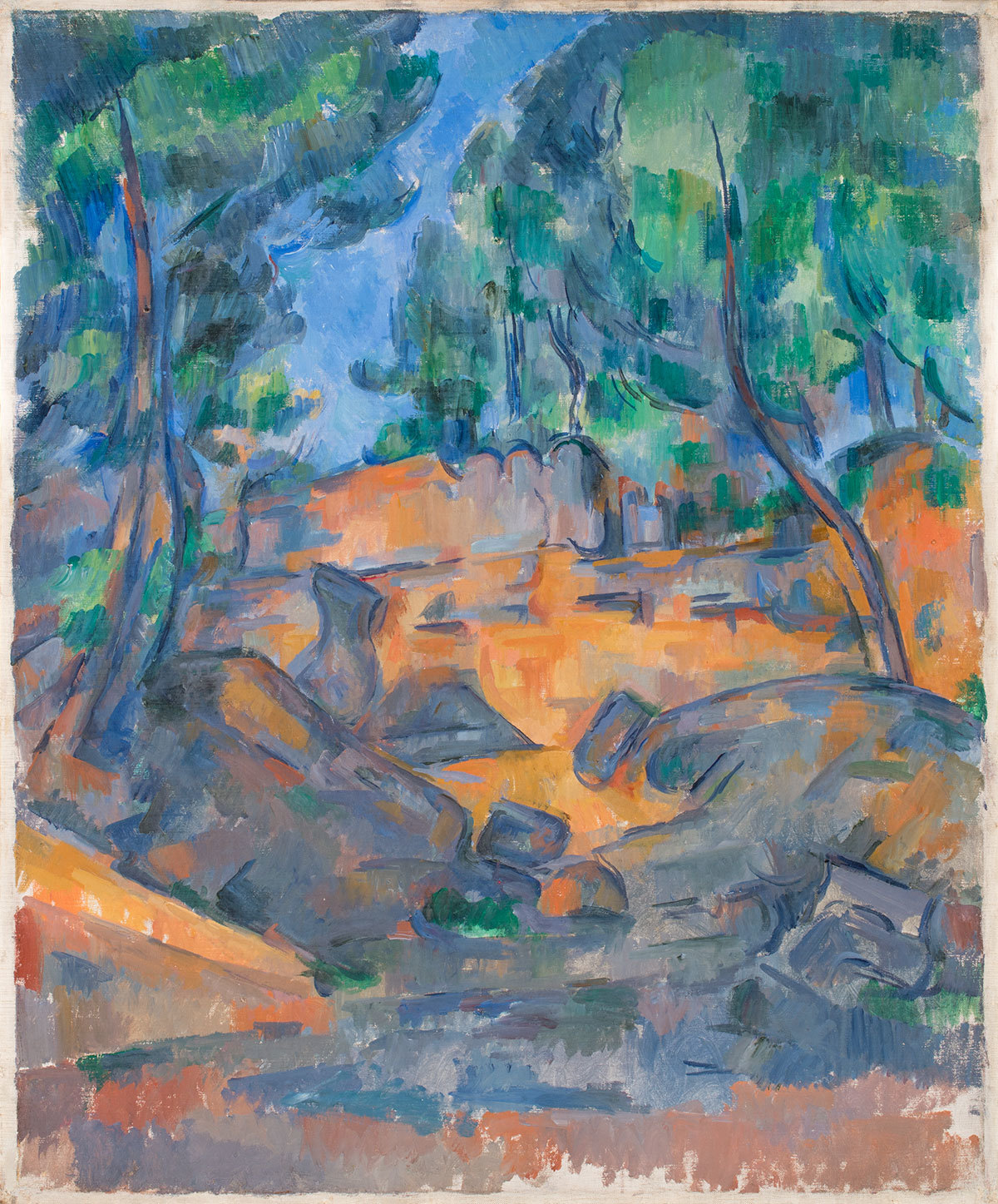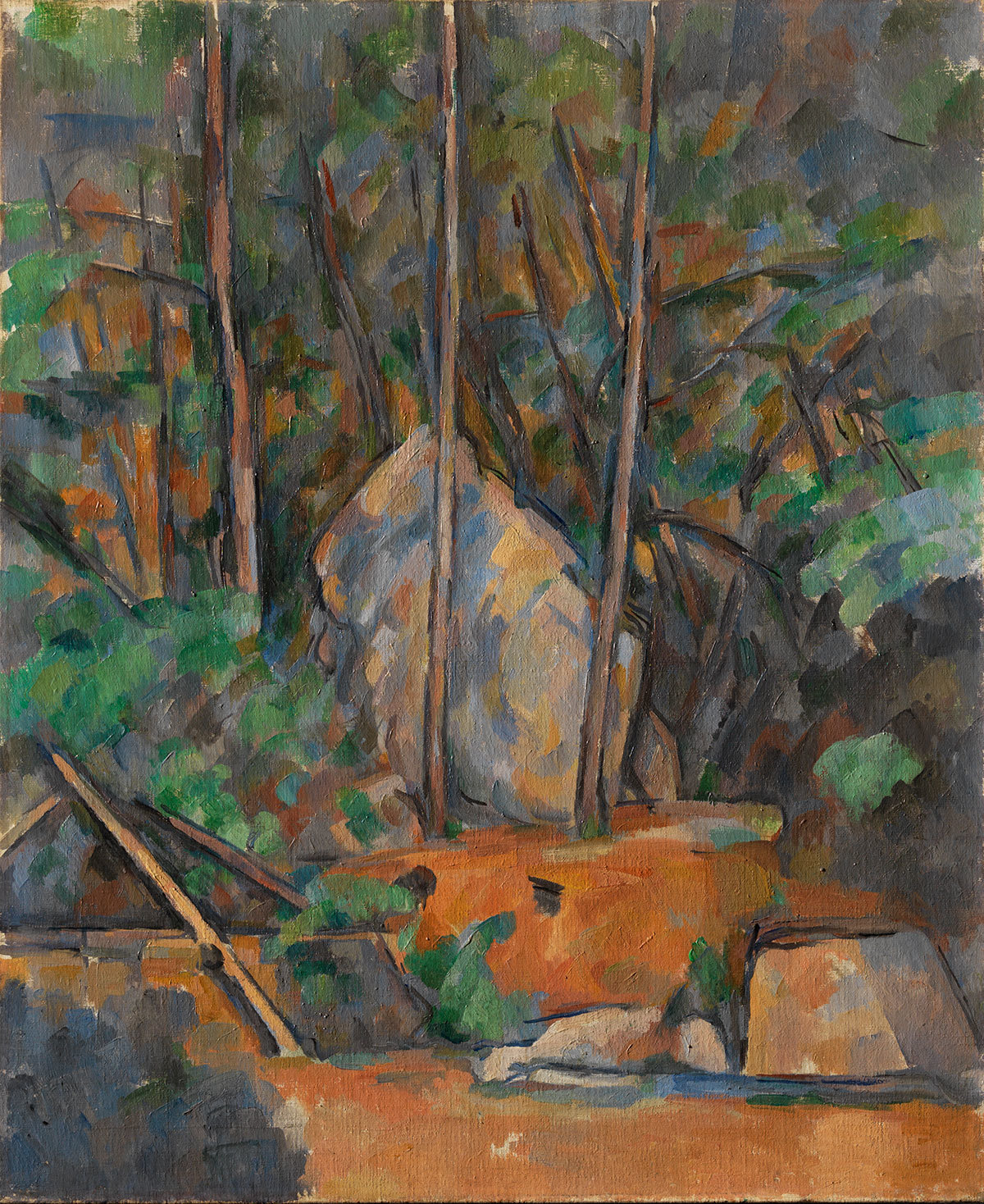Princeton University Art Museum (March 7-June 14, 2020)
Royal Academy of Arts, London (July 8-Oct. 8, 2020)
From the mid-1860s until shortly before his death in 1906, Paul Cézanne
created some 27 canvases that take rocks as their principal subjects.
Among the artist’s most extraordinary landscapes, his paintings of rock
formations have never been the exclusive subject of an exhibition or
publication. Royal Academy of Arts, London (July 8-Oct. 8, 2020)
Featuring some 15 of the most important works – including scenes of the rocky terrain of the forest of Fontainebleau, the Mediterranean coastal village of L’Estaque and the area around Aix-en-Provence – this exhibition will explore the character and development of these works, the Romantic or picturesque fascination with the unusual or inhospitable landscape, and the close relationship of this motif to the artist’s numerous paintings of Mont Sainte-Victoire, both shaping and shaped by the radical changes that he made in his art over the final decade of his life.
Cézanne: The Rock and Quarry Paintings will also feature selected watercolors and related documentary material. Together, they reveal the artist’s fascination with geology, which began when he was a schoolboy in Aix-en-Provence and ultimately helped shape the radical innovations of his artistic practice.
Organized by the Princeton University Art Museum, Cézanne: The Rock and Quarry Paintings
will be on view in Princeton from March 7-June 14, 2020, before
traveling to the Royal Academy of Arts, London, from July 8-Oct. 18,
2020. The exhibition will include significant loans from museums and
private collections in the U.S. and abroad, including the Musée d’Orsay,
Paris; the National Gallery, London; the Kuntshaus Zürich; the Museum
of Modern Art, New York; the Metropolitan Museum of Art, New York; and
the Baltimore Museum of Art.
0

0

Paul
Cézanne. Quarry at Bibémus (La Carrière de Bibémus), 1898–1900. Oil on
canvas, 65.41 x 54.61 cm. The Nelson Atkins Museum of Art. Gift of Henry
W. and Marion H. Bloch
The exhibition is curated by John Elderfield, an independent
Cézanne scholar who was until recently the Allen R. Adler, Class of
1967, distinguished curator and lecturer at the Princeton University Art
Museum, and is chief curator emeritus of painting and sculpture at the
Museum of Modern Art.
As a young artist in the mid-1860s, Cézanne found that rock
formations were ideal subjects for his innovative use of thick paint
applied directly to the canvas with a palette knife. In the late 1870s
and early 1880s, as he painted in the Mediterranean coastal village of
L’Estaque, such themes aided his return to sculptural subjects after he
had absorbed the lessons of Impressionism. Finally, from the mid-1890s
to almost the end of his life, he sought secluded places in which to
paint, finding them both in rocky terrain deep in the forest of
Fontainebleau and at two sites close to his home in Aix-en-Provence –
within the abandoned Roman Bibémus Quarry and high up in the estate of a
local manor house known as the Château Noir.




Paul Cézanne,
L'Estaque,
1879-83.

Paul Cézanne,
Trees and Rocks, Near the Château Noir,
1900-1906.

Paul Cézanne,
Pines and Rocks (Fontainebleau?),
c. 1897.

Paul Cézanne,
Cistern in the Park of Château Noir,
c. 1900.
Cézanne: The Rock and Quarry Paintings will
present a selection of works from the mid-1860s to early in the 20th
century that reflect the artist’s interest in increasingly close-up
depictions of rock formations, their geological structures shaping the
compositions of the canvases. Cézanne was certainly conscious of the
long history of European artists painting rocks and forests in the
studio, but he avoided the often fantastic or picturesque aspects of
such works, painting his canvases outdoors. As such, he learned from the
plein-air practices of 19th-century artists, including the
Impressionists’ personal responses to the shifting patterns of light on
outdoor scenes. However, Cézanne’s unpopulated paintings reflect a more
distanced, formalized view of nature as having its own, ancient order,
an order that he recreated in conspicuously assembled, flat patches of
colored paint. While abstraction was not his own aim, his innovations
were deeply influential on early 20th-century artistic developments that
moved in that direction, with both Henri Matisse and Pablo Picasso
reportedly having said, “Cézanne is the father of us all.”


A fully illustrated catalogue will accompany the exhibition,
featuring a major essay by Elderfield; an essay on the geological
context of the work by Faya Causey and introductions to the sites at
which Cézanne painted by Anna Swinbourne, both independent scholars; and
catalogue entries on the works in the exhibition by Sara B. Green,
Annamarie Iker and Ariel Kline, graduate students in the Department of
Art and Archaeology at Princeton University. The catalogue will be
published by the Princeton University Art Museum and distributed by Yale
University Press.